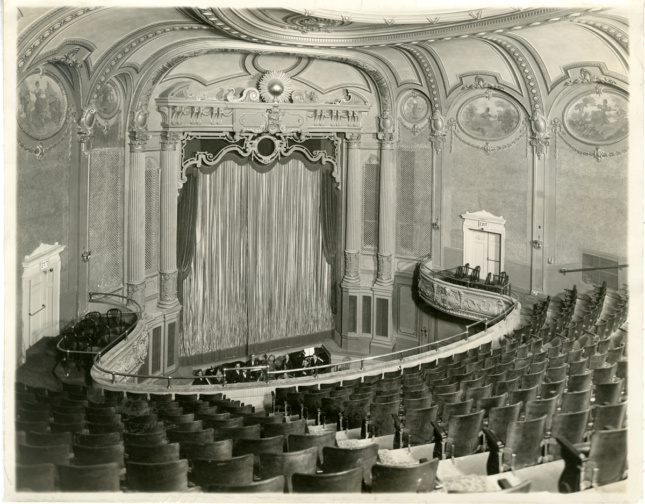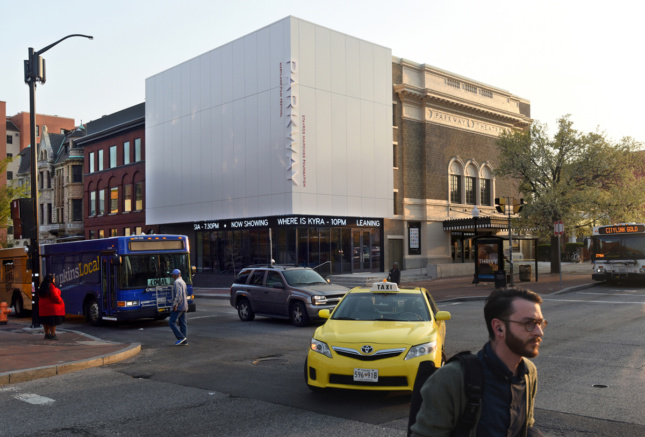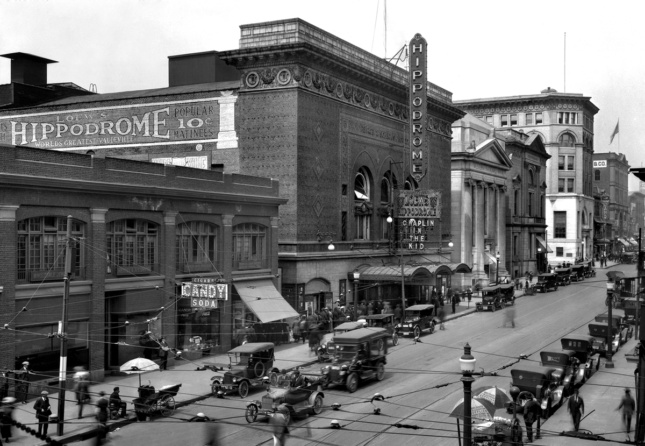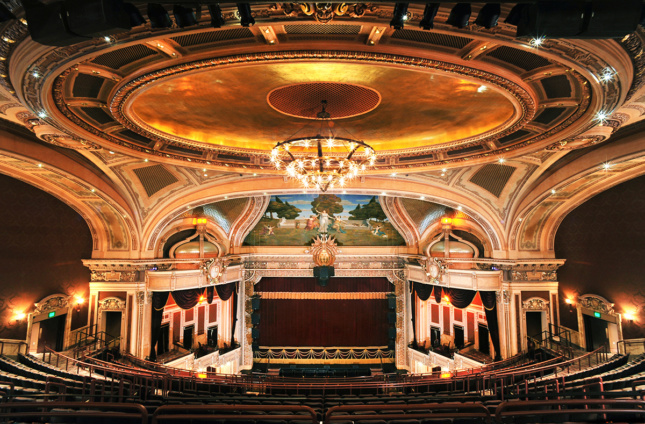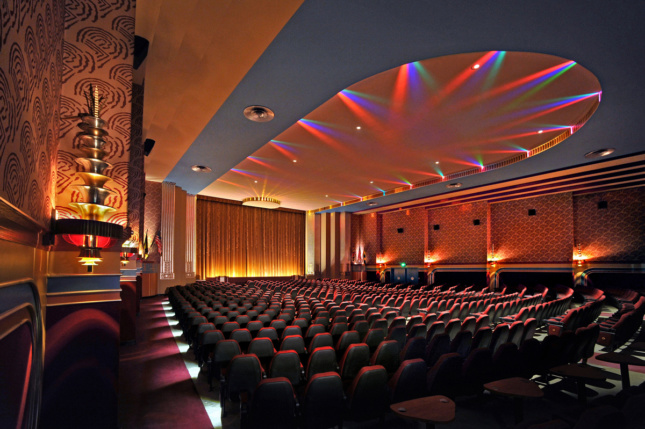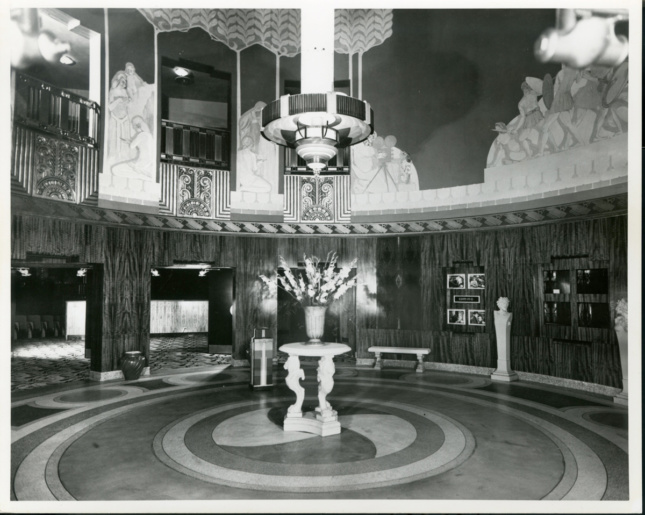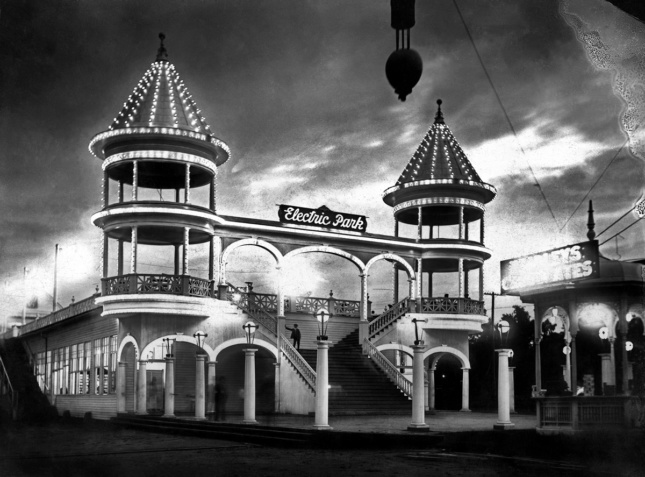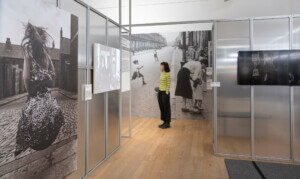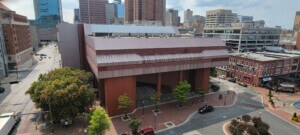A new exhibition at the National Building Museum in Washington, D.C., chronicles the stunning and somewhat sad history of cinema houses in America’s Charm City. Flickering Treasures: Rediscovering Baltimore’s Forgotten Movie Theaters opens tomorrow, November 17, showcasing the work of award-winning Baltimore Sun photographer Amy Davis.
The show is based on Davis’s year-old book of the same name, which features 72 Baltimore buildings photographed from 1896 to today. Collected over a decade, her colorful documentary photography pits the current state of these once-opulent downtown theaters and modest neighborhood cinema houses with vintage black-and-white photos of the structures in their heyday.

Curator Deborah Sorensen worked with Davis to collect over 100 architectural fragments and pieces of theater ephemera to populate the exhibition, each adding a layer of tangibility to the buildings detailed in the book. Along with these elements, personal stories unveiled through text illuminate both the local story of Baltimore’s own 20th-century urbanization, segregation, and suburban sprawl, as well as the national trends in theater design and the ever-evolving movie-going experience.
“Baltimore was already a mid-size city at the turn-of-the-century,” said Sorensen. “As a case study, it mirrors the development of the film industry and how it shaped cities across America. Movie palaces were being built to reflect local civic pride and the power of movies. If you look at when cities really started booming, it’s when these structures were coming online.”
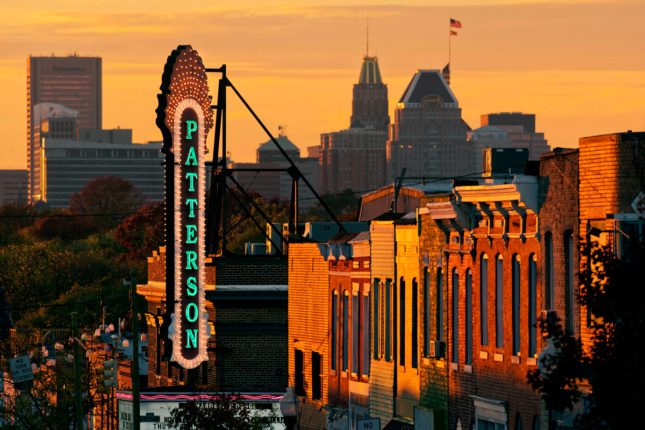
Davis’s photographs not only unveil the architectural history of movie theaters, but track these shifts in local population, land use, and urban history in Baltimore. In the early 1900s, famous architects were called upon to design grand cinema houses for downtown commercial districts. Many sported shiny, stand-out marquees and seated up to 2,000 people. Post-World War II, the city had 119 theaters of varying sizes and designs, but due to the introduction of television and mega-malls, the way people consumed films dramatically changed, as well as the way theaters were constructed.
Davis conducted 300 interviews with movie exhibitors, theater employees, property owners, and filmgoers to get at the heart of these theaters and their surrounding locales. She photographed the buildings as they stand today—some revitalized as performing arts centers, churches, or concert venues, others still derelict and falling apart, and some completely demolished. Their successful, or in some cases poor, evolutions point to local investment in preservation and development over time. “We’re looking at the rise of movie-going and the decline of downtowns through the lens of this particular place,” said Sorenson. “It’s a reality that many American cities have faced and are trying to recover from.”
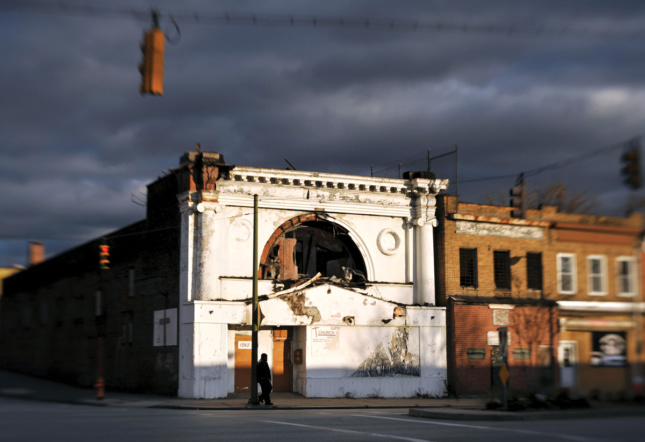
Since the first movie theater opened its doors in the late 19th century, Baltimore has been home to a total of 240 cinemas. Today, it has only five functioning theaters, not including the homogenous AMC or Regal theaters common today. Two outstanding examples include the legendary Hippodrome, built in 1914, and Parkway, built in 1915. Both came back to life after multi-million dollar restoration and expansion projects. Not all movie theaters across the country have been so lucky.
Flickering Treasures gives visitors an in-depth look at Baltimore’s former movie palaces and neighborhood film houses, as well as notable architects and industry entrepreneurs through poignant case studies and enlightening biographies. With photographs of rarely-seen interiors and much-need information on the history of these unique facades, Davis shines a spotlight on over a century of change in one American city.
Flickering Treasures is open through October 14, 2019. For a sneak peek of the show, visit Davis’s Flickering Treasures on Facebook.







